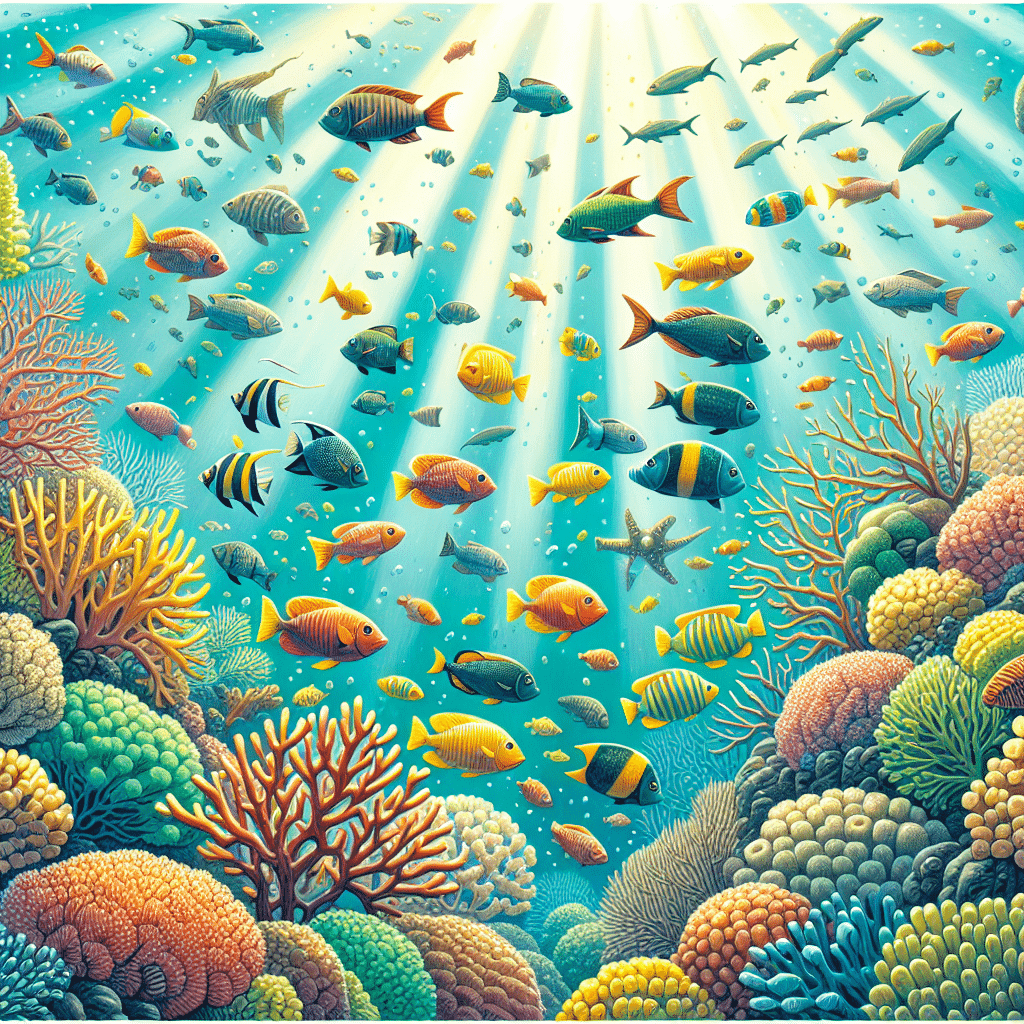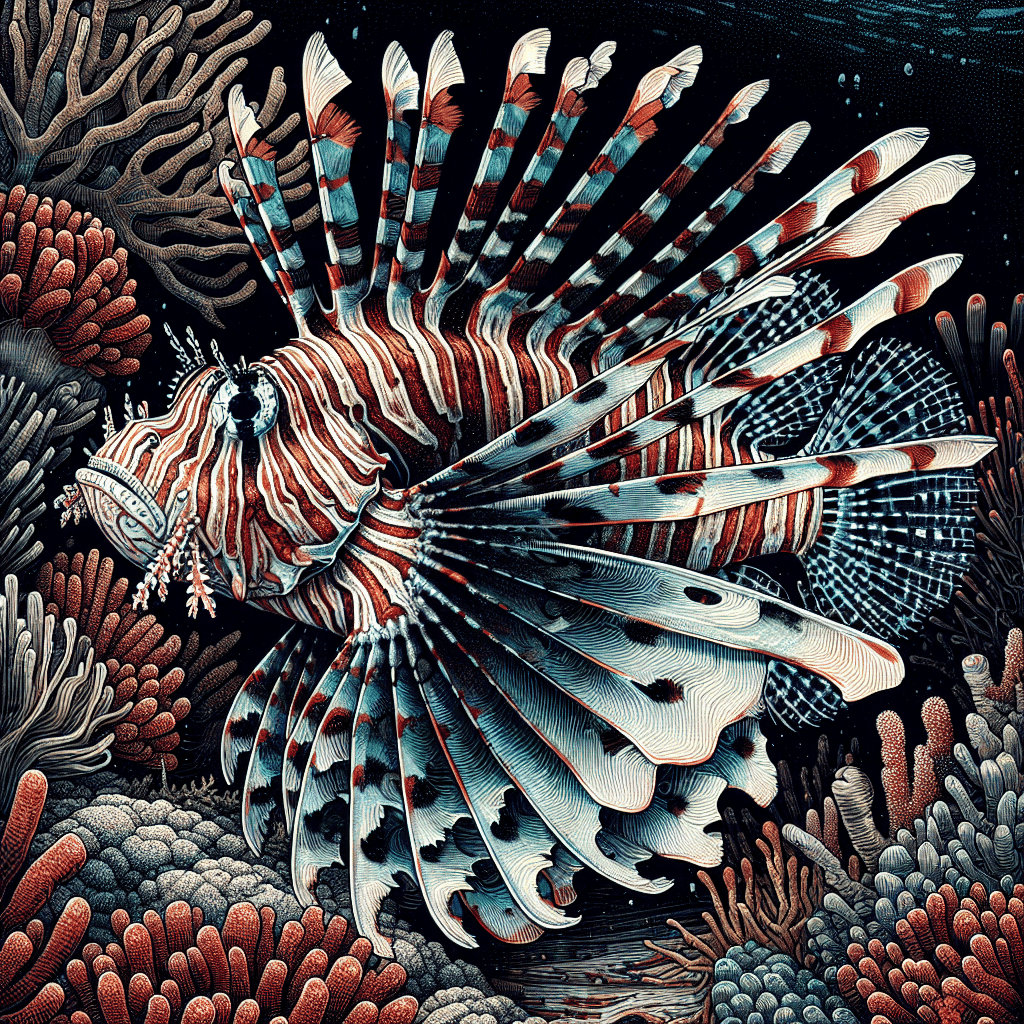The African Butterfly Fish
Habitat and Distribution
The African Butterfly Fish, scientifically known as Pantodon buchholzi, is a fascinating species native to various regions in Africa. I’ve come across this fish in countries like the Republic of Congo, Democratic Republic of Congo, Cameroon, Central African Republic, Benin, Chad, Nigeria, Sierra Leone, Niger, and Gabon. These fish thrive in swamps, creeks, and backwaters, showcasing their unique adaptability to their environment.
One interesting fact about this fish is its remarkable ability to jump out of the water. They use their pectoral fins for propulsion, which helps them capture insect prey or escape from predators. This species is not a glider; instead, it is often described as a ballistic jumper due to its impressive jumping power.
Physical Characteristics
The African Butterfly Fish has some distinctive physical traits that make it stand out among other fish. Here’s a quick overview of its key characteristics:
| Feature | Description |
|---|---|
| Body Shape | Flat and laterally compressed |
| Size | Typically reaches about 5 to 6 inches (12-15 cm) |
| Coloration | A combination of yellow, brown, and blue hues |
| Fins | Large pectoral fins that are used for jumping |
| Eyes | Prominent eyes positioned on the top of the head |
This fish is known for its vibrant coloration, which can vary significantly among individuals. The combination of yellow, brown, and blue hues creates a striking appearance, making it a popular choice among aquarium enthusiasts.
In terms of feeding, the African Butterfly Fish primarily feeds on terrestrial insects, aquatic larvae, crustaceans, and smaller fish. This insectivore diet is essential for maintaining its health and vibrant coloration. If you’re looking to create a habitat for this unique species in your reef tank, be sure to consider its dietary needs and natural behaviors as outlined in other sections of this article.
Feeding Habits of Butterfly Fish
Understanding the feeding habits of butterfly fish is essential for anyone looking to care for these vibrant marine creatures. I’ve found that their diet can vary quite a bit based on the species, but there are some commonalities that can help guide my feeding practices.
Natural Diet
In the wild, butterfly fish typically consume a variety of foods. They are known to eat small invertebrates like crustaceans and mollusks, along with algae and other plant material. Some species even have specialized diets, feeding exclusively on certain types of coral or sponges (FishLab).
For example, the African Butterfly Fish (Pantodon buchholzi) is primarily insectivorous and thrives on a diet of live and frozen foods such as bloodworms, brine shrimp, prawns, and small mealworms. Interestingly, they feed only from the surface of the water (Seriously Fish).
To give you a clearer picture, here’s a quick breakdown of their natural diet:
| Food Type | Examples |
|---|---|
| Invertebrates | Crustaceans, Mollusks |
| Plant Material | Algae |
| Specialized Diets | Certain types of coral or sponges |
| Surface Feed | Bloodworm, Brine Shrimp, Prawn |
Dietary Requirements
When it comes to dietary requirements, butterfly fish need a protein-rich diet to maintain their health and vitality. They thrive on a variety of foods to ensure they receive all necessary nutrients. In captivity, common foods include frozen foods, vitamin-enriched brine shrimp, live foods, mysid shrimp, and small pieces of fish.
It’s recommended to feed butterfly fish 2-3 times a day, depending on their size and activity level. In the wild, they may go longer periods without food if prey is scarce (FishLab). Here’s a table summarizing their dietary needs:
| Food Type | Description |
|---|---|
| Frozen Foods | Often enriched with vitamins |
| Live Foods | Provides natural hunting experience |
| Mysis Shrimp | High protein content |
| Small Fish Pieces | Offers variety and nutrition |
By focusing on a balanced diet and providing a mix of different food types, I can ensure that my butterfly fish remain healthy and vibrant. If you’re interested in learning more about keeping these fish, feel free to explore related topics like marine fish or specific species like clownfish and tang.
Behavior and Unique Features
Aggression and Compatibility
When it comes to the behavior of butterfly fish, I’ve noticed that the African Butterfly Fish can be a bit tricky. While they are generally peaceful, they can show aggression towards other fish species, particularly those with trailing fins. It’s important to keep in mind that they might eat any fish that fits in their mouth, so compatibility is key when selecting tank mates. They can be particularly aggressive towards other surface-dwelling species, which can lead to territorial disputes.
Here’s a quick comparison of the aggression levels of some popular fish species in a reef tank:
| Fish Species | Aggression Level |
|---|---|
| African Butterfly Fish | Moderate |
| Clownfish | Low |
| Lionfish | High |
| Tang | Moderate |
| Pufferfish | Moderate |
Jumping Abilities
One of the most fascinating features of the African Butterfly Fish is its incredible jumping ability. These fish can leap several meters into the air, a skill they use to catch flying insects or evade predators. It’s pretty impressive to watch them make such acrobatic jumps. They use their large pectoral fins for propulsion when they jump, giving them a butterfly-like appearance from above (Seriously Fish).
In fact, they are often described as “ballistic jumpers” rather than gliders, since they can jump clear of the water and glide a small distance to avoid danger. This jumping ability can be a concern for hobbyists, as they might escape from an open tank if not properly secured.
If you’re considering adding an African Butterfly Fish to your tank, be sure to have a secure lid to prevent any unexpected leaps. Their unique behaviors and striking appearance make them a captivating addition to any aquarium, but it’s essential to understand their needs and potential challenges.
Types of Butterfly Fish
When diving into the world of butterfly fish, I find it fascinating to explore the various species and their unique characteristics. There are around 129 species of butterfly fish in 12 genera, and they primarily inhabit the coral reefs of the Atlantic, Indian, and Pacific Oceans (Wikipedia).
Different Species
Here are some notable species of butterfly fish that I often come across:
| Species Name | Common Name | Length (cm) |
|---|---|---|
| Chaetodon capistratus | Foureyed Butterflyfish | 12 – 22 |
| Chaetodon ocellatus | Spotfin Butterfly Fish | 12 – 22 |
| Chaetodon vagabundus | Banded Butterfly Fish | 12 – 22 |
| Chaetodon longirostris | Long-snout Butterfly Fish | 12 – 22 |
| Chaetodon sedentarius | Reef Butterfly Fish | 12 – 30 |
These species exhibit a range of vibrant colors, making them a stunning addition to any reef tank.
Distinctive Features
Butterfly fish are renowned for their striking appearances, often adorned with patterns of black, white, blue, red, orange, and yellow spots. This vivid coloration serves not only to attract attention but also to camouflage them within their coral reef habitats.
- Foureyed Butterflyfish: Named for the prominent black spots near their tails, resembling eyes, which can confuse predators.
- Spotfin Butterfly Fish: Features a distinctive black spot on the dorsal fin, which adds to its unique look.
- Banded Butterfly Fish: Known for its bold vertical stripes, providing excellent camouflage among the coral.
- Long-snout Butterfly Fish: This species has an elongated snout that helps it feed on flatworms and other small invertebrates hidden in crevices.
- Reef Butterfly Fish: Exhibits bright colors and patterns that help it blend into the colorful reefs.
These unique traits not only make butterfly fish visually appealing but also play essential roles in their survival and feeding habits. If you’re considering adding butterfly fish to your tank, understanding these distinctive features will help you appreciate their beauty and behavior. For more fish options, check out our articles on marine fish or specific species like clownfish and tang.
Conservation of Butterfly Fish
Threats and Challenges
Butterflyfish face significant threats primarily due to the destruction of coral reefs, which serve as both their habitat and food source. Ocean pollution and habitat loss are major contributors to this decline. Additionally, butterflyfish have natural predators such as snappers, eels, and sharks, but they have developed survival mechanisms. Their small, flattened bodies and unique color patterns help protect them from these threats (Dressel Divers).
In the aquarium trade, the reef butterflyfish, Chaetodon sedentarius, is popular due to its appealing appearance. However, capturing this species for aquariums raises concerns regarding its long-term sustainability. While juveniles often adapt better to captivity, adults can be challenging to maintain due to dietary requirements and territorial behaviors (Florida Museum).
| Threats | Description |
|---|---|
| Coral Reef Destruction | Loss of habitat and food source due to pollution and development |
| Predation | Natural predators include snappers, eels, and sharks |
| Aquarium Trade | Capture for aquariums can impact wild populations |
Conservation Efforts
To protect butterflyfish and their habitats, various conservation efforts are in place. The federal Endangered Species Act (ESA) in the US, established in 1973, is a crucial piece of legislation aimed at protecting endangered and threatened species. Once a species is listed under the ESA, certain activities that may harm the species become illegal, including harassment and killing (Xerces Society).
Community engagement plays a vital role in conservation, with initiatives focusing on monitoring reef health and promoting awareness about the importance of coral ecosystems. By encouraging responsible aquarium practices and educating hobbyists about sustainable fishkeeping, we can help ensure that butterflyfish populations remain stable.
Efforts to restore coral reefs through reef restoration projects and marine protected areas also contribute to the long-term survival of butterflyfish and their habitats. These measures aim to enhance biodiversity and create healthier ecosystems, benefiting not only butterflyfish but also a wide range of marine life, including other popular species like clownfish and tang.
Butterfly Fish in Aquariums
Keeping butterfly fish in an aquarium can be a rewarding experience, but it comes with its own set of challenges. As a hobbyist, it’s important to understand the care and maintenance required for these beautiful creatures, as well as the potential difficulties that may arise in captivity.
Care and Maintenance
Butterfly fish are stunning additions to any reef tank, but they require a bit of TLC to thrive. Here are some key points to consider for their care:
Diet: Butterfly fish need a protein-rich diet to stay healthy. In my experience, they thrive on a variety of foods, including frozen foods, vitamin-enriched brine shrimp, live foods, mysid shrimp, and small pieces of fish. It’s essential to offer a diverse diet to ensure they receive all the necessary nutrients (FishLab).
Feeding Frequency: Typically, these fish should be fed 2-3 times a day, depending on their size and activity level. They may go longer periods without food in the wild, but in an aquarium setting, I find that regular feeding is crucial for their well-being.
Tank Environment: Creating a suitable environment is vital. Butterfly fish prefer a well-maintained reef tank with plenty of hiding spots and live rock for exploration. Good water quality and regular tank maintenance are essential to keep them healthy.
| Care Aspect | Recommendation |
|---|---|
| Diet | Protein-rich, varied diet |
| Feeding Frequency | 2-3 times a day |
| Tank Environment | Well-maintained reef tank with hiding spots |
Challenges in Captivity
While butterfly fish can adapt to aquarium life, they can be tricky to maintain. Here are a few challenges I’ve encountered:
Dietary Needs: Their specific dietary requirements can make them difficult to care for. Some species are known to nibble on coral and algae, but they don’t rely on these as their primary food source (FishLab). This means you’ll need to be vigilant about providing the right foods.
Territorial Behavior: Many butterfly fish species, such as the reef butterflyfish (Chaetodon sedentarius), can be territorial. This can lead to aggression, especially in smaller tanks. It’s essential to consider tank mates carefully if you plan to keep multiple fish.
Juveniles vs. Adults: Interestingly, juveniles tend to thrive better in captivity than adults. This has been my observation, as adults often come with established behaviors that can be challenging to manage in an aquarium setting (Florida Museum).
Understanding these aspects of care and maintenance can help you create a healthy environment for your butterfly fish. With the right approach, you can enjoy the beauty of these fish in your reef tank while ensuring their needs are met. For more tips on keeping marine fish, check out our article on marine fish.
Breeding and Reproduction
Reproductive Behavior
Butterfly fish are quite fascinating when it comes to their reproductive behavior. These fish are typically monogamous, meaning they stick with the same partner for life. I’ve observed that adult reef butterflyfishes, like the Chaetodon sedentarius, often form pairs that engage in elaborate courtship rituals during dusk. They swim around each other in a lively manner, circling head to tail, which can be quite a sight! When the moment is right, they swim upward to release their eggs and sperm simultaneously.
A female butterfly fish can release between three to four thousand eggs during this spawning process. The eggs are buoyant and become part of the plankton, floating in the water until they hatch into tiny, translucent larvae known as “tholichthys.” This stage is crucial as the larvae are quite vulnerable, so they often hide in crevices until they’re large enough to defend themselves.
Life Cycle
The life cycle of butterfly fish is an intriguing journey. After the eggs hatch, the tholichthys larvae are covered in large, bony plates, a unique feature that helps protect them during their early life. This armored stage is quite rare, seen in only a few other families of fish, like the scats. As they grow, these larvae gradually lose their bony plates and start transforming into juveniles.
The typical life expectancy of butterfly fish ranges from 5 to 10 years. They live in small groups or pairs, segregating for reproduction. Interestingly, they enter a juvenile stage when they reach the size of a coin. By dawn, the color of the juvenile butterfly fish closely resembles that of the adult, making them well-camouflaged in their coral reef habitats.
Here’s a brief overview of their life cycle stages:
| Life Cycle Stage | Description |
|---|---|
| Eggs | Released into the water, buoyant, and part of plankton. |
| Tholichthys | Translucent larvae with bony plates for protection. |
| Juveniles | Resemble adults in color, begin to adapt to reef life. |
For anyone interested in keeping these vibrant fish in a tank, understanding their breeding and life cycle is essential. Proper care can lead to successful breeding, adding another layer of excitement to your reef tank. If you want to know more about marine fish care, check out our detailed articles on marine fish and fish tank maintenance.
Community Science and Conservation
Importance of Community Monitoring
As a fish tank and reef tank hobbyist, I find that community science plays a vital role in the conservation of species like the butterfly fish. Community monitoring allows everyday people to gather valuable data about fish populations, their habits, and their habitats. This collective effort can help track changes in marine environments and alert conservationists to potential threats. Programs like the Bumblebee Atlas and Western Monarch monitoring showcase how community involvement can lead to better management practices for vulnerable species.
By participating in these initiatives, hobbyists can contribute to essential research efforts. It helps in understanding not just butterfly fish, but also the overall health of marine ecosystems. This data aids in recovery planning for endangered species and can lead to more effective conservation strategies.
Impact on Endangered Species
The butterfly fish, like many marine species, faces threats from habitat loss and climate change. The federal Endangered Species Act in the US provides a framework for protecting these species. Once a fish is listed as endangered or threatened, specific activities that could harm them may become illegal (Xerces Society). This legal protection is essential for ensuring the survival of species at risk.
One notable success story is the Fender’s Blue Butterfly, which saw its status change from endangered to threatened after dedicated conservation efforts in Oregon. This gives hope that with the right data and community involvement, we can make a difference for butterfly fish and other marine species.
As I continue to care for my reef tank, I keep in mind the importance of supporting conservation efforts. Engaging in community science not only enriches my understanding of marine life but also contributes to the broader mission of preserving our oceans. By staying informed and participating in monitoring initiatives, we can all play a part in protecting the delicate balance of marine ecosystems.



